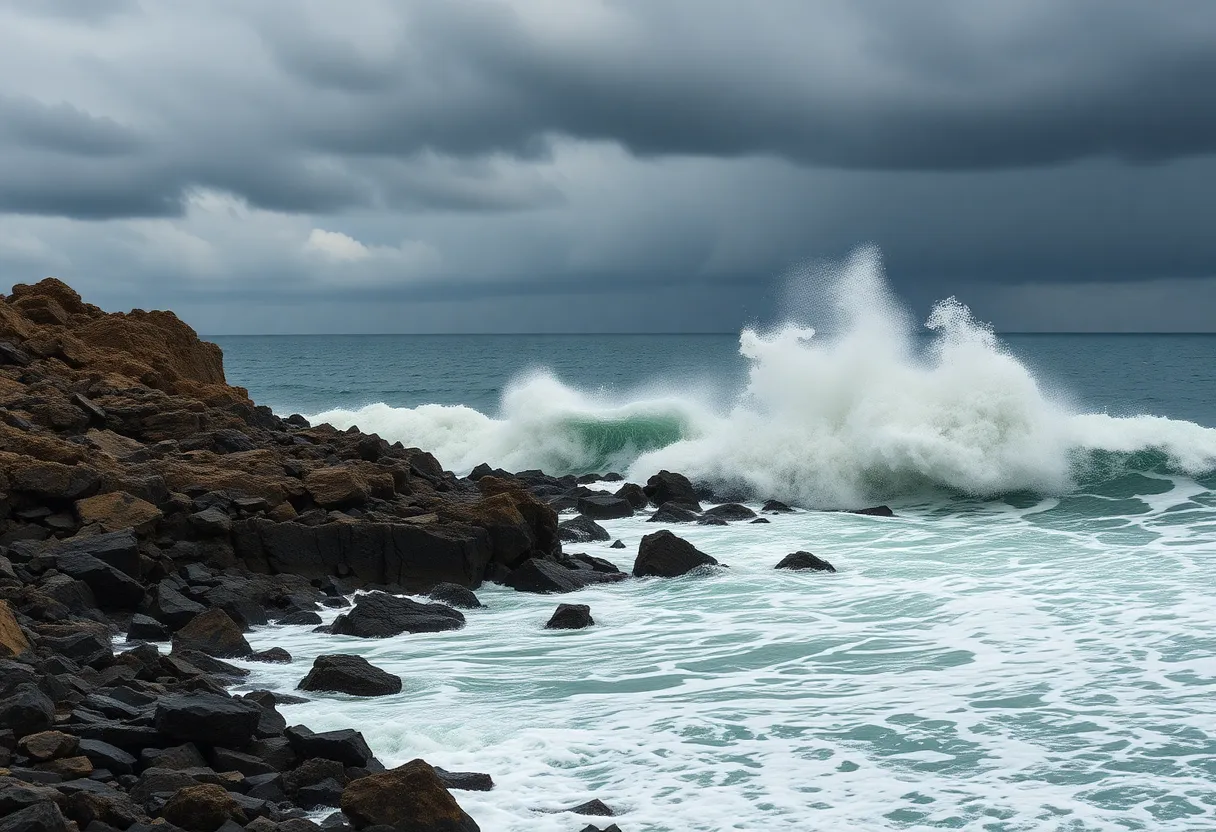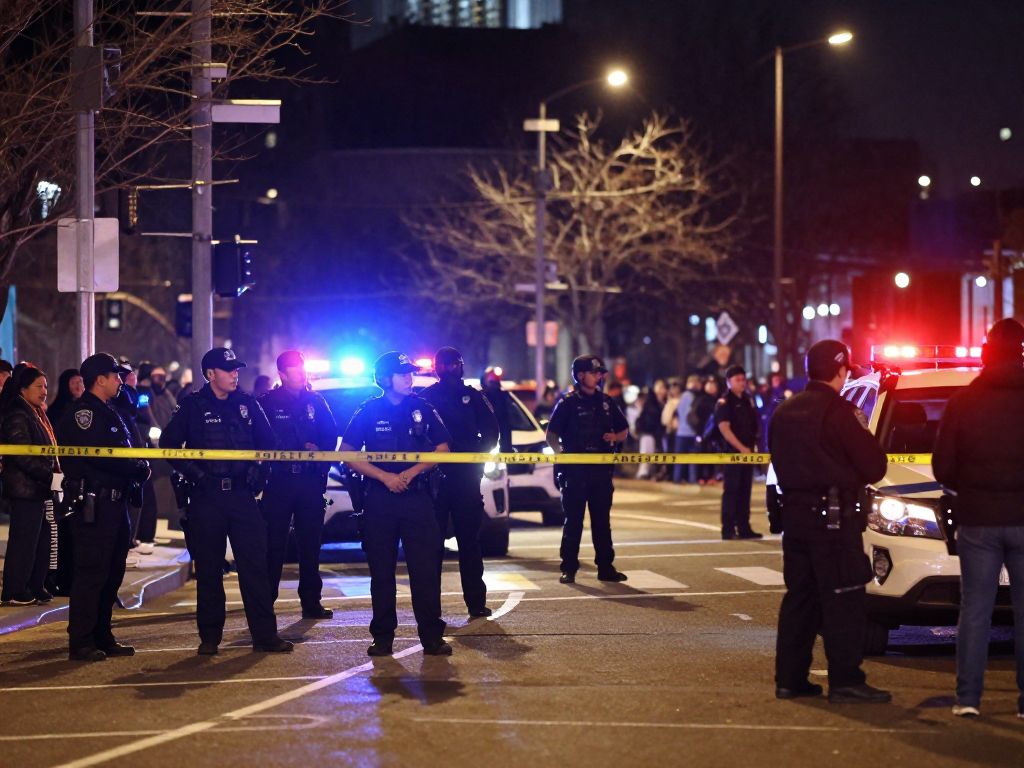News Summary
An 8.8 magnitude earthquake struck near Russia’s Kamchatka Peninsula, resulting in tsunami warnings across the Pacific, affecting regions including Japan and the U.S. West Coast. Authorities issued advisories for potential evacuations as waves are expected to impact coastal areas, although major inundation is not anticipated. Residents are cautioned about strong currents and advised to prepare for possible evacuations, while emergency services remain on high alert for aftershocks and further developments.
Massive Earthquake Near Russia Triggers Tsunami Alerts Across the Pacific
On July 29, 2025, an earthquake, with a staggering magnitude of 8.8, rocked the vicinity of Russia’s Kamchatka Peninsula at precisely 4:25 p.m. Pacific Time. This significant seismic event, identified by the U.S. Geological Survey, had its epicenter about 160 miles from Hokkaido, Japan, and it sent powerful tsunamis heading toward Japan and the Aleutian Islands of Alaska.
Tsunami Warnings and Advisories Issued
In response to the earthquake, the National Tsunami Warning Center promptly issued a tsunami advisory that spanned much of the U.S. West Coast, encompassing Oregon, Washington, and California. Hawaii officials quickly joined the effort, warning that tsunami waves were expected to impact all coastal areas of the islands, causing potential damage. This was no small event, as a tsunami warning stretched from northern California all the way to the Oregon border, raising alarms about possible widespread inundation along the shorelines.
For those on the Oregon coast, waves were projected to arrive by 11:34 p.m. local time, with initial heights anticipated to reach up to 1.8 feet above normal tide levels. The waves were forecasted to continue impacting the coast for up to 15 hours following the first surge. Although the National Weather Service did communicate that widespread inundation wasn’t expected, officials emphasized caution, especially for those at the shoreline.
Warnings and Safety Precautions
Authorities were clear that the initial wave might not be the largest, advising everyone to steer clear of both the shore and any water activities. The Oregon Office of Emergency Management described the tsunami as “not major,” but they didn’t want to downplay the dangerous currents and strong waves that could pose risks to anyone near coastal waters. Coos County officials, anticipating potential wave heights of up to 3 feet, urged people to remain at a safe distance from the beaches.
Residents and visitors along the Pacific Coast were advised to prepare for possible evacuations should the advisory evolve into a more serious warning. To assist those uncertain about evacuation procedures, the Oregon Department of Geology and Mineral Industries launched an online tool to guide residents on what to do in the event of a tsunami.
Seismic Activity and Historical Context
This earthquake event is reminiscent of a significant seismic occurrence back on November 4, 1952. That earthquake, with a magnitude of 9.0 in Kamchatka, didn’t lead to any fatalities but did send 30-foot waves crashing down on Hawaii.
Reports from the earthquake’s epicenter indicated that areas such as Petropavlovsk-Kamchatsky experienced power outages and shattered glass. Japan’s meteorological authorities initially estimated the earthquake’s magnitude at 8.0, but later analyses confirmed it at 8.8. They anticipated tsunami waves reaching about 1 foot on Hokkaido, and it was reported that the first wave reached the seaside area of Severo-Kurilsk.
Aftershocks and Widespread Preparedness
In the aftermath, a series of aftershocks were recorded, with the most powerful reaching a magnitude of 6.9. Tsunami warning systems indicated that multiple Pacific coastlines could expect waves ranging from 1 to 3 meters (3 to 10 feet).
In Hawaii, residents were advised to seek higher ground as an added precaution against the tsunami risk, with initial waves observed at about 6 feet. Hawaii’s Governor provided reassurances that no major wave had been recorded immediately after the alerts rolled out, but he stressed the importance of remaining vigilant.
Authorities across the Pacific remained on high alert, with warnings also emerging from Mexico’s navy about tsunami waves headed for its northern shores. Meanwhile, New Zealand cautioned about strong currents in its waters as a result of the seismic activity.
Transport in Japan was disrupted, with ferry services, trains, and airport operations being either delayed or suspended as safety precautions. Initial reports from Kamchatka indicated that ports were flooded and multiple structures had suffered damage. Thankfully, no major injuries have been reported, leaving officials cautiously optimistic even as they continued to monitor the situation closely.
As the Pacific region braces for further seismic activity and potential waves, communities are urged to stay informed and be prepared.
Deeper Dive: News & Info About This Topic
- CBS News
- Wikipedia: Tsunami
- CNBC
- Google Search: Kamchatka earthquake 2025
- Reuters
- Google Scholar: Kamchatka earthquake impacts
- AP News
- Encyclopedia Britannica: Earthquake
- NDTV
- Google News: Kamchatka tsunami warnings

Author: STAFF HERE PHILADELPHIA WRITER
The PHILADELPHIA STAFF WRITER represents the experienced team at HEREPhiladelphia.com, your go-to source for actionable local news and information in Philadelphia, Philadelphia County, and beyond. Specializing in "news you can use," we cover essential topics like product reviews for personal and business needs, local business directories, politics, real estate trends, neighborhood insights, and state news affecting the area—with deep expertise drawn from years of dedicated reporting and strong community input, including local press releases and business updates. We deliver top reporting on high-value events such as Mummers Parade, Philadelphia Flower Show, and Thanksgiving Day Parade. Our coverage extends to key organizations like the Greater Philadelphia Chamber of Commerce and United Way of Greater Philadelphia, plus leading businesses in telecommunications, food services, and healthcare that power the local economy such as Comcast, Aramark, and Children's Hospital of Philadelphia. As part of the broader HERE network, we provide comprehensive, credible insights into Pennsylvania's dynamic landscape.





